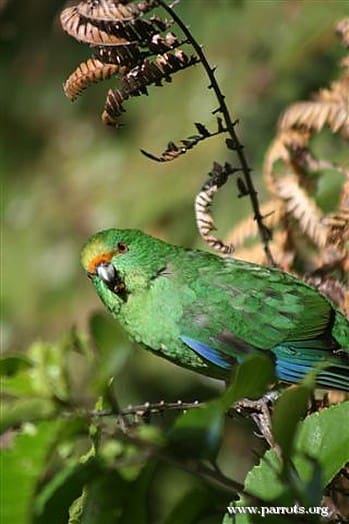Orange-fronted Parakeet Conservation
From 2020, with the support of New Zealand Parrot Trust, surveys were conducted across Tuhua island to collect information on the birds’ nesting biology to understand how well they are establishing there. Currently, efforts at translocations to other islands are ongoing. The WPT also plays a role in supporting captive breeding of the species.
Population: Fewer than 500, stable.
Threats: This species has suffered from rat and stoat invasions and loss of nesting beech trees through harvest and burning. Deer, cattle and possums have degraded low-lying brush. Psittacine beak and feather disease has been found on Little Barrier and Maud Islands in other Cyanoramphus species, as well as antibodies in some Orange-fronted Parakeets.
Range: New Zealand, formerly throughout North and South Islands, now only on South Island in South Hurunui, Poulter and Hawdon River valleys. Captive-bred birds were introduced to Chalky Island, Fiordland, and Maud and Blumine Islands. Also introduced in the north to Mayor Island.
Natural history: These parakeets are found below 1000 m (3280 ft) in upland beech (Nothofagus) forests on the mainland; occur in mixed Podocarp and beech areas on the two offshore islands at lower altitudes. They feed on shoots, buds, berries, flowers, seeds and insects, including caterpillars, aphids and scale insects. They are seen in pairs or small flocks but will mix with Yellow-crowned Parakeets (Cyanoramphus auriceps).

